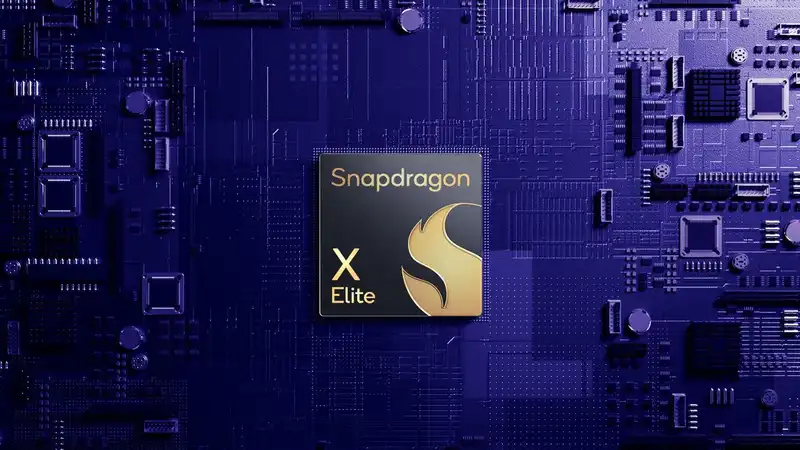The first examples of laptops powered by Qualcomm's new Snapdragon X chips are now in the hands of actual buyers, and Qualcomm has released more details on gaming performance and features. According to Qualcomm, the company's new Arm chips go toe-to-toe with Intel's Meteor Lake laptop CPUs in a variety of games, sometimes beating them hands down.
Needless to say, Qualcomm is hardly an unbiased source. But let's suspend that thought. Qualcomm's latest marketing dump (via Anandtech) promises monthly driver releases for the Snap X's Adreno integrated GPU. Qualcomm also has an Nvidia GeForce Experience-style app for the chip, which comes preloaded with optimizations and settings for a variety of Windows game titles. In other words, Qualcomm is pushing gaming in general quite strongly.
New performance numbers show the chip going toe-to-toe with Intel's Core Ultra 155H in nine game suites running at 1080p. In Qualcomm's benchmarks, at worst, the Snapdragon X's Adreno GPU falls just short of Intel's chip. In some games, however, Qualcomm's Arm processors slightly outperform.
Inevitably, these benchmarks raise as many questions as they answer. For example, no details are given regarding settings other than 1080p resolution. It is also unclear whether this is done natively or using CPU-side emulation, but we suspect the latter.
Along with the promise of monthly driver releases for GPUs with performance upgrades and bug fixes, there is an Adreno Control Panel companion app that will continue to update drivers and automatically optimize settings for each game. All of this is rather reminiscent of the sort of setup that Nvidia and AMD have in place for their gaming GPUs.
Perhaps it is surprising that Qualcomm is pushing gaming so hard, although these kinds of features and details are needed by companies that want to compete in gaming graphics on the PC. Not only is it a new GPU architecture in the context of serious PC gaming (in fact, it is not a new GPU architecture at all in the Android phone space), but getting into gaming with an Arm-based CPU rather than x86-based is a huge challenge.
Speaking of the Adreno GPU in the Snapdragon X, its origins can be traced back to Qualcomm's acquisition of many of its "handheld graphics and multimedia assets" including mobile graphics from non-AMD. In fact, Adreno is intentionally an anagram of Radeon. Truly, there is nothing new under the sun.
In any case, Qualcomm has been very cagey about the details inside the Adreno GPU until now. However, with the shift toward PCs with the Snapdragon X, the gaming and development community will no doubt need to be more open to support the new platform. Fortunately, Qualcomm seems to recognize this and has lifted the lid somewhat on Adeno's internal structure.
It is not worth going into forensic detail. But the highlights are as follows: the Adreno X1, known as the version of Adreno in the Snapdragon X, is absolutely not the most advanced architecture.
It is limited to DX12.1, not the latest DX12.2 (also known as DirectX 12 Ultimate). This is reflected in partial rather than full hardware ray tracing support (for example, no hardware BVH traversal), and other DX12.2 features such as mesh shaders are not supported.
However, the GPU has features similar to Nvidia's Tensor core, which raises the question of whether Qualcomm is developing something similar to Nvidia's deep learning enhanced upscaling technology, DLSS.
Again, Qualcomm will undoubtedly need such capabilities to compete with Nvidia and others in PC graphics. As Intel discovered with Arc graphics, this is a very tall order.
All these caveats aside, I find it exciting to be involved in PC gaming right now. Who knows what wonders will be available this time next year; the Snapdragon X could be a low-budget gaming option or a great chip for handhelds. Or perhaps it should be AMD's Strix Point.
And with a whole new GPU architecture from Nvidia, AMD, and Intel to be announced in the next six months or so, it's certainly a good time to get into PC gaming.
.

Comments